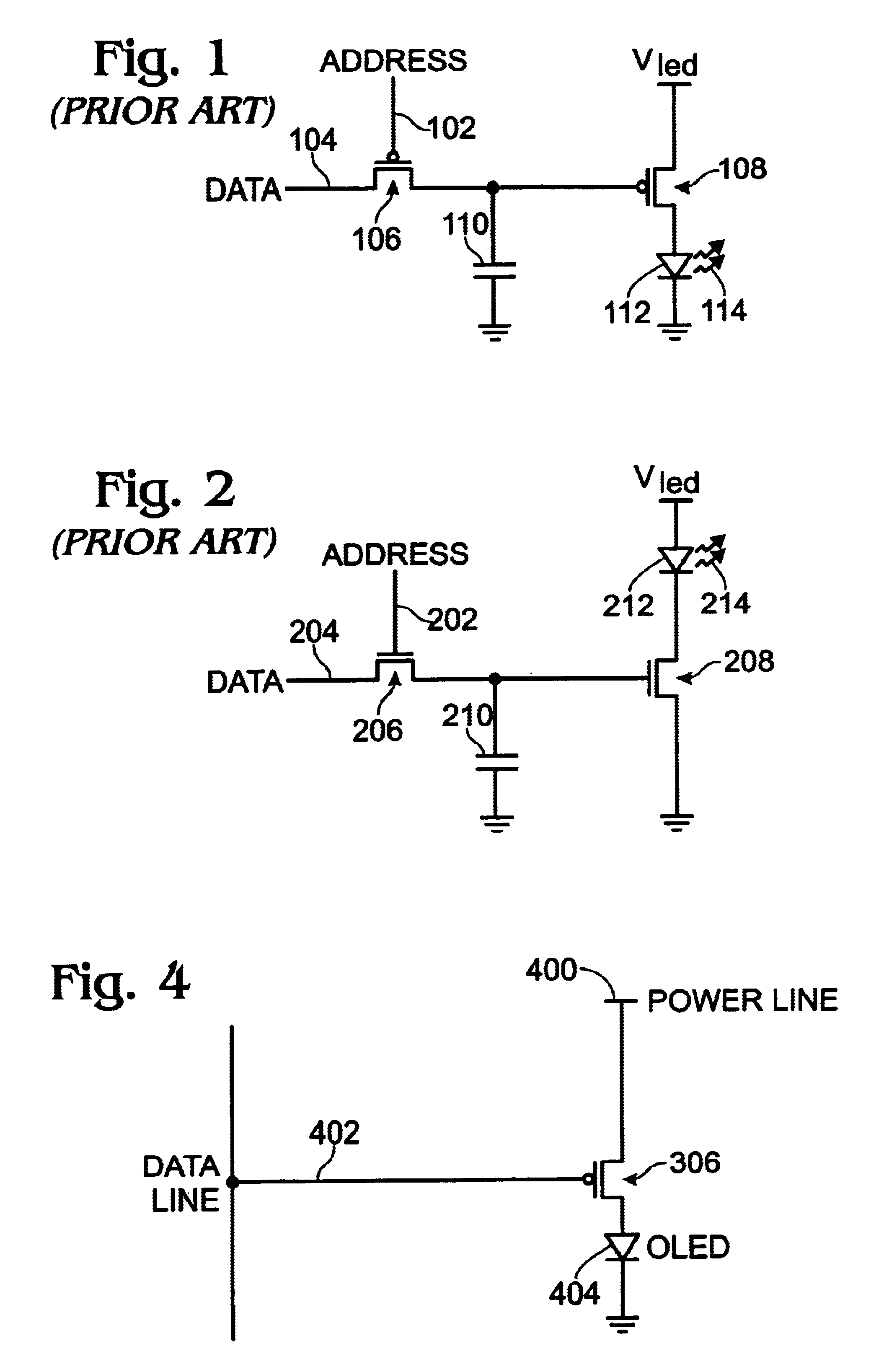Flexible metal foil substrate display and method for forming same
a flexible metal foil substrate and display technology, applied in the field of oled display fabricated, can solve the problems of reducing the luminous efficiency of available oleds, and affecting the luminous efficiency of oleds,
- Summary
- Abstract
- Description
- Claims
- Application Information
AI Technical Summary
Benefits of technology
Problems solved by technology
Method used
Image
Examples
Embodiment Construction
[0034]FIG. 3 is a partial cross-sectional view of the present invention flexible substrate, active matrix (AM), top emission organic light emitting diode (OLED) display. The display 300 comprises a metal foil substrate 302 and a plurality of pixels areas. For simplicity, a single pixel area 304 is shown. Each pixel area, including pixel area 304, includes at least one thin-film transistor (TFT) 306 overlying the substrate. The pixel area 304 is isolated with an isolation material 307.
[0035]FIG. 4 is a schematic block diagram of the OLED display of FIG. 3, using a PMOS FET transistor. As shown, first TFT 306 has a drain electrode connected to a power line 400, a gate electrode connected to a data line 402, and a source connected to the anode of an OLED 404. The cathode of the OLED 404 is connected to ground (or a voltage potential lower than the power line). As mentioned in the Background Section, PMOS transistors are typically used when the cathode of the LED 404 is grounded. The po...
PUM
| Property | Measurement | Unit |
|---|---|---|
| thickness | aaaaa | aaaaa |
| thickness | aaaaa | aaaaa |
| thickness | aaaaa | aaaaa |
Abstract
Description
Claims
Application Information
 Login to View More
Login to View More - R&D
- Intellectual Property
- Life Sciences
- Materials
- Tech Scout
- Unparalleled Data Quality
- Higher Quality Content
- 60% Fewer Hallucinations
Browse by: Latest US Patents, China's latest patents, Technical Efficacy Thesaurus, Application Domain, Technology Topic, Popular Technical Reports.
© 2025 PatSnap. All rights reserved.Legal|Privacy policy|Modern Slavery Act Transparency Statement|Sitemap|About US| Contact US: help@patsnap.com



